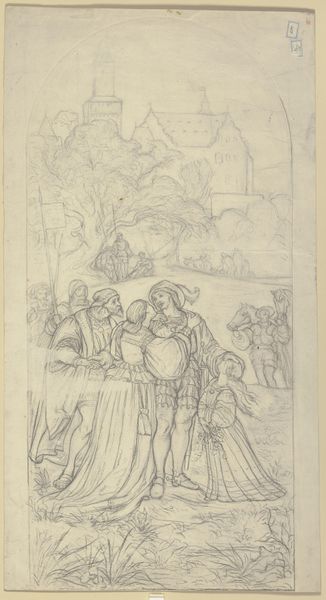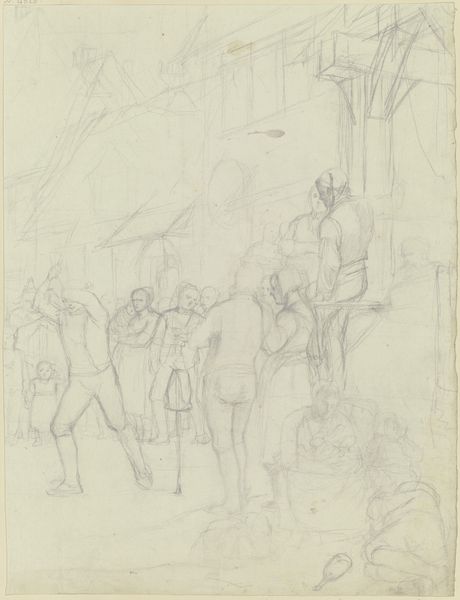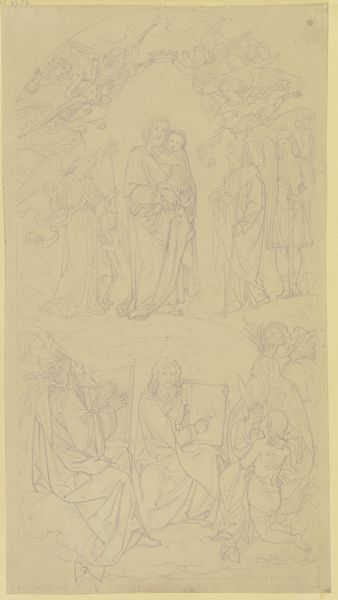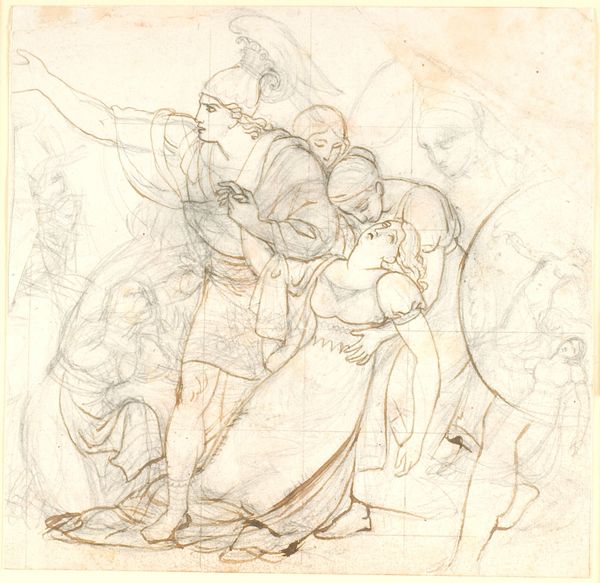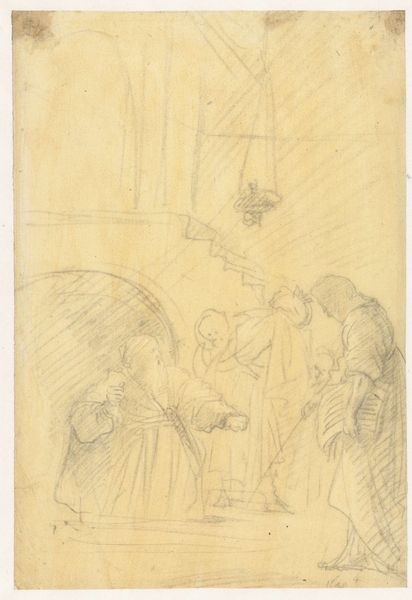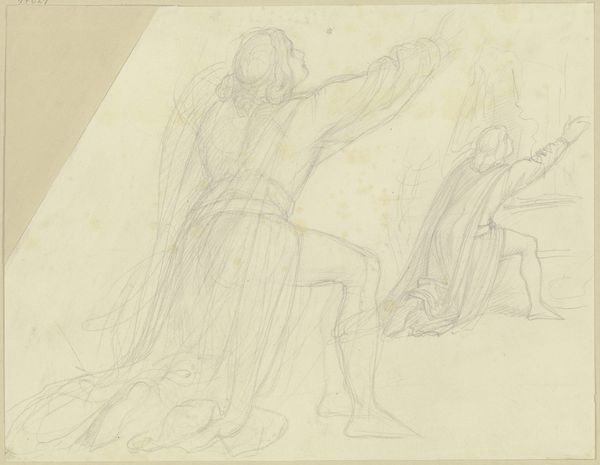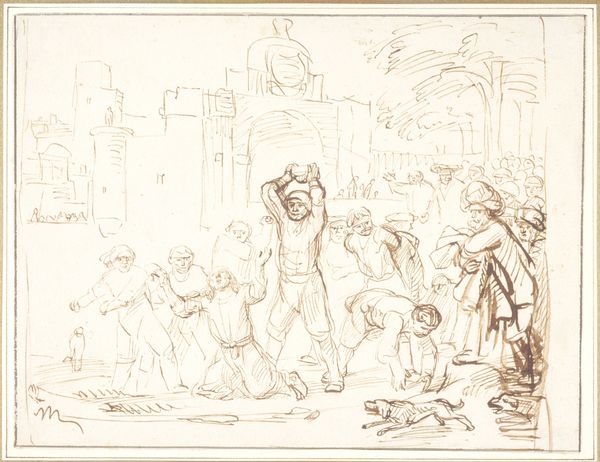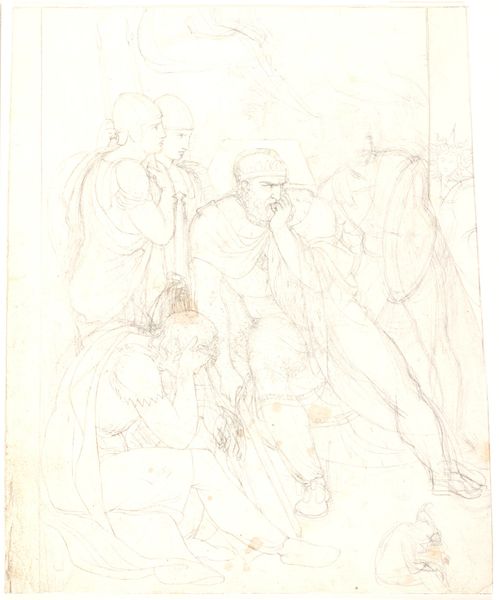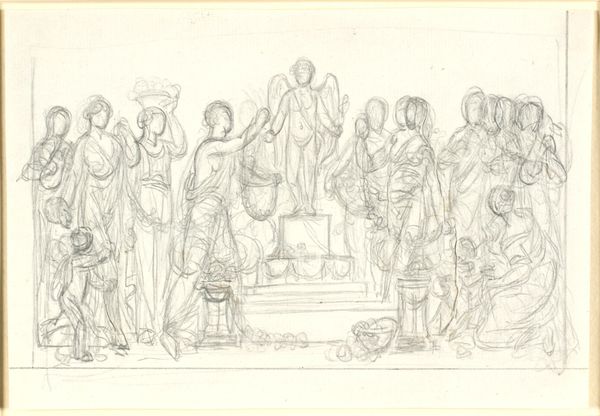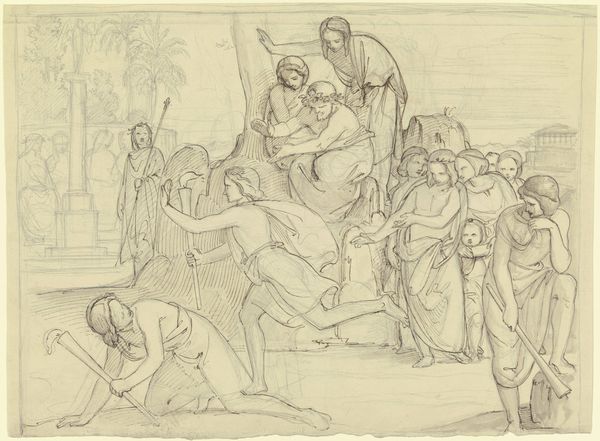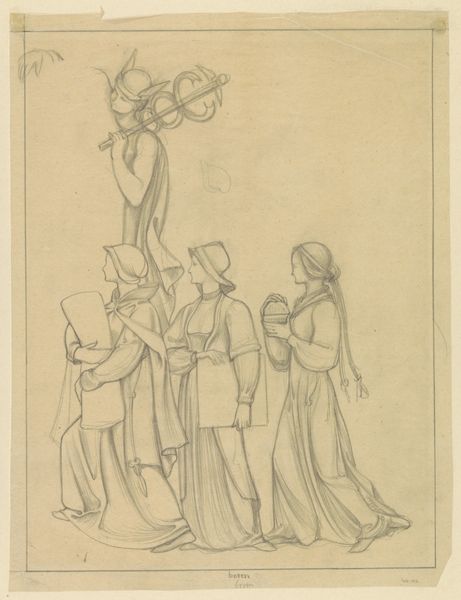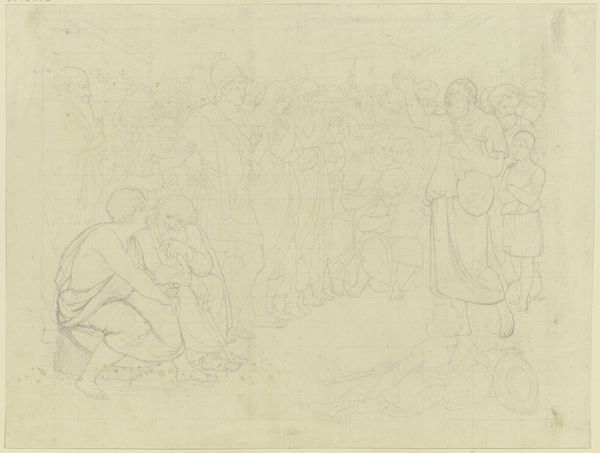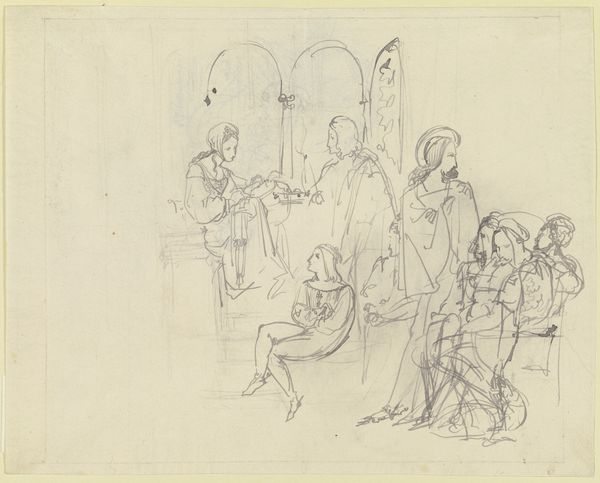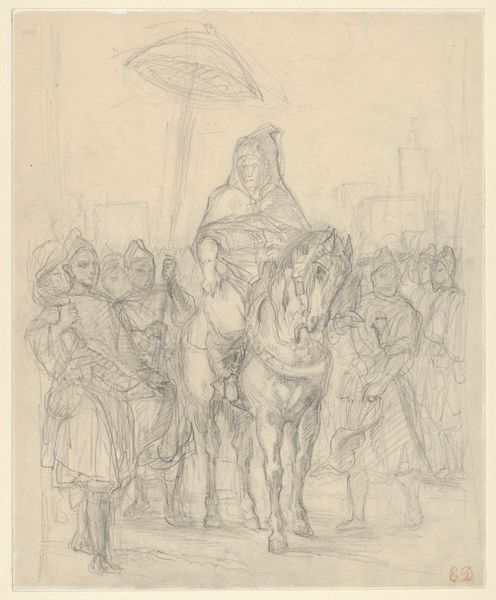
Der Tod des Reichritters Franz von Sickingen nach Belagerung und Übergabe der Burg Nanstein an die gegen ihn ziehenden Landesfürsten
0:00
0:00
drawing, paper, pencil
#
drawing
#
medieval
#
narrative-art
#
paper
#
pencil
#
history-painting
#
academic-art
#
realism
Copyright: Public Domain
Editor: This pencil drawing, “Der Tod des Reichritters Franz von Sickingen…", shows what I presume to be the death of a knight in a medieval setting. It's rendered with such precision, but its unfinished state gives it an aura of incompleteness, of lives cut short. What strikes you about the composition? Curator: It is indeed a potent work. If we observe closely, we notice how Trost has deployed line and mass to create a scene fraught with both tension and stillness. The diagonal lines of the architecture on the left converge toward a vanishing point outside our view, pulling us into the scene, whilst the vertical figures command our attention. Editor: I see what you mean about the lines of the building on the left side that converge like a frame on the central figures. Why are some parts, like the clothing, drawn in detail while others appear unfinished? Curator: Precisely. The meticulous rendering of textures—the armor, the cloth—against the stark simplicity of other areas highlights a clear intention. Is Trost prioritizing texture and form of those immediate objects, those articles that directly convey identity and status, over the mere suggestion of a background or less important characters? Are we, in fact, meant to fixate solely upon that which is palpable, that which signifies physical presence and its imminent loss? Editor: It seems that he's chosen to only give us parts of the story. I focused on who is included within this almost-empty set, but that may have kept me from seeing the full picture. Curator: A valuable insight. The orchestration of forms here, I propose, seeks less to depict historical accuracy and more to offer a visual meditation on mortality itself. How astute that the barest, almost ephemeral, lines, conjure forth such a powerful emotional resonance!
Comments
No comments
Be the first to comment and join the conversation on the ultimate creative platform.
